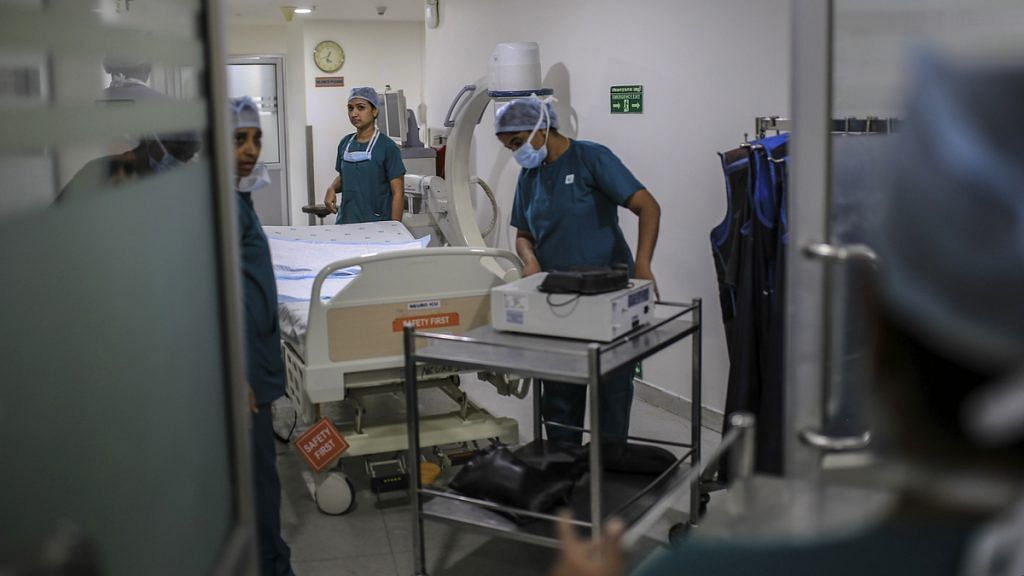According to govt data, the number of SC & ST students enrolling in MBBS and dental courses has gone up only marginally.
New Delhi: Students from the Scheduled Castes and Scheduled Tribes are not filling up the entire quota of seats reserved for them in MBBS and dental courses across India. But in courses such as nursing and midwifery, enrolment from both communities has exceeded their respective quotas of 15 per cent and 7.5 per cent.
Data from the All India Survey of Higher Education (AISHE) under the Ministry of Human Resource Development shows that in the last seven years, enrolment of SCs was 13.42 per cent in 43 medical courses. The corresponding figure for STs was 4.95 per cent.
Meanwhile, in courses such as General Nursing and Midwife and Auxiliary Nurse and Midwife, enrolment of SCs stood at 21.3 per cent and 21.7 per cent respectively, while enrolment of STs was at 9.27 per cent and 10.41 per cent respectively.
Other Backward Classes (OBCs), who get 27 per cent reservation, seem better represented in medical education — their enrolment is 33.19 per cent in the set of 43 courses that include MBBS and dental studies.
Also read: Indian nurses are not paying back their education loans
Who’s studying what?
The average enrolment of SCs in the MBBS course over the seven-year period was 8.9 per cent, while the latest AISHE report showed that in 2017-18, the figure had risen very slightly to 9.03 per cent.
The seven-year figure for STs was just 3.34 per cent, while for 2017-18, it went up marginally to 3.81 per cent.
SCs accounted for 7.59 per cent of enrolment in the bachelor of dental surgery course.
On the flip side, tribal students showed high interest in the bachelor of veterinary science and bachelor of Ayurveda and Naturopathy courses, where they filled up 10.2 per cent and 15 per cent respectively of the total seats — far beyond their quota.
OBCs made up 23.3 per cent of India’s MBBS students, and 24 per cent of General Nursing and Midwife students. But in pharmaceutical studies, they exceeded their quota at every level — diploma (33.67 per cent), bachelor’s degree (32.53), master’s degree (28.95) and doctorate (33.68).
Also read: Quota seats for SC, ST students in higher education remain vacant, OBCs fare better
Why this is happening
Dr Rajeev Sood, dean of the PGIMER Ram Manohar Lohia Hospital in New Delhi and an expert in medical education, said one of the many reasons that students from SC and ST categories do not go for courses such as MBBS and dental is because of the time span of the courses and the kind of money one has to spend.
“They are lengthy, time-taking, technical courses and require more investment, both at the time of studies and after passing out as well. Once these students pass out from colleges, they have to invest money in opening their clinics or hospitals, and not everyone is ready for that,” Sood said.
“Nursing courses, on the other hand, are short-term courses, require less investment and give quick gains. A students who enters these courses will be able to start earning early.”
He added that many students from the reserved category who do enrol for MBBS and dental courses drop out after the first year, when they are not able to cope with the pressure.
Dr B. Srinivas, additional director-general of medical education, government of India, said the problem of low enrolment started at the school level.
“A lot of students from the reserved categories complete their schooling with Hindi as medium of instruction, whereas the whole MBBS programme is taught in English,” he said.
“(The low enrolment) could be because they have to deal with the English language, and their foundations aren’t clear. In the latest curriculum, we have included a two-month foundation course where students learn English and are made comfortable with the course. We hope that this will reduce the attrition the institutions are currently facing.”
Asked why the SCs & STs showed high interest in auxiliary medical studies like nursing and midwifery, Srinivas said: “The entrance exams to these courses are easier to crack than the NEET (National Eligibility cum Entrance Test — a national-level MBBS and dental entrance exam). Their syllabus is also easier than the MBBS.”
However, despite these numbers, the fact remains that the social status of SCs and STs is on the upward curve, said Srinivas.
“The medical courses in which SCs and STs show high interest also have a good job market in the remote and rural areas of the country, where doctors cannot reach. They can help fill this gap, which consequently also improves their social status,” he said.
(With inputs from Kritika Sharma)
